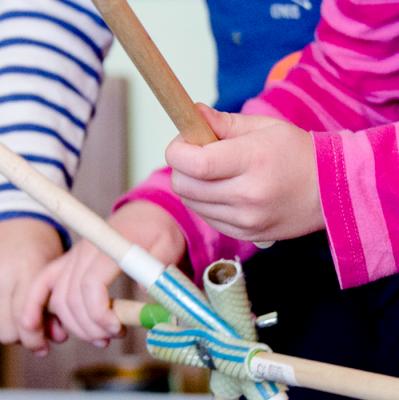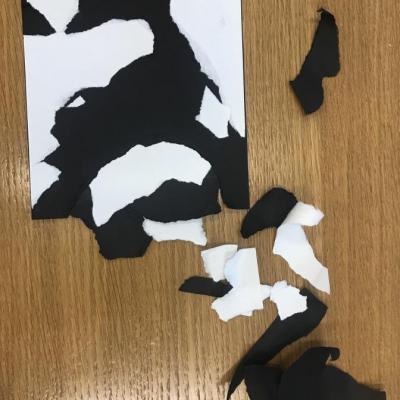Mechanical dissections are a practice that allows learners to discover the often hidden design of objects.

Mechanical dissections are a practice that allows learners to discover the often hidden design of objects.



Agency by Design Principal Investigator Shari Tishman takes a dispositional approach to redefining “maker empowerment.”

This entry offers a critical perspective of the role of the arts within the popular STEAM agenda. Most loosely defined, STEAM can be understood as incorporating the arts into the STEM (science, technology, engineering, and mathematics) acronym for the purpose of introducing a focus on art and design into these four subject areas. This entry first questions what the A in the STEAM acronym actually represents. The entry then argues that a focus on any discrete set of disciplines prioritizes some domains of practice, while overlooking others. The entry goes on to encourage a more distributed approach to pedagogical practice that is less about establishing catchy acronyms that privilege some disciplines over others – and more about supporting young people and adults in becoming multimodal learners capable of making connections between and beyond the disciplines.

Esta rutina anima a los estudiantes a considerar las diferentes perspectivas de diversas personas que interactúan dentro de un sistema en particular.

This routine helps students explore complexity by encouraging them to look closely at the details of something, considering its various viewpoints, users, and stakeholders, and reflecting on their own connections and involvement with it.
Since 2012, the Agency by Design research team at Project Zero has explored the promises, practices, and pedagogies of maker-centered learning in a variety of settings. This initial research produced a flexible pedagogical model that supports young people in becoming sensitive to design and seeing themselves as the creators of their worlds. Beginning in 2018, the Agency by Design research team began working with a cohort of early childhood educators in Hong Kong on a pilot study to adapt the Agency by Design framework for young learners. The result of this exciting work is the Maker-Centered Learning Playbook for Early Childhood Education. This playbook includes lessons learned from the study, pictures of practice, and a host of educator tools and resources designed to support the development of young students’ maker capacities while also nurturing other generative cognitive dispositions and habits of mind at this early stage of learning and development.
This resource is available in hard copy on Amazon.

这个思考模式鼓励学生能够慢下来,仔细观察其中一个系统。通过这样帮助学生更好地认识具体系统里无论是直接或间接相关的人物,学生也会注意到系统里任何一点变化,也许都会有意无意地影响到系统的其它方面。

Jaime Chao Mignano is a Senior Practitioner Specialist on the JusticexDesign (JxD) project, and an ongoing leader in the project's conception and development, including developing tools and supporting educators to apply the emerging JxD framework in their contexts.
We find ourselves in a thorny historical moment, in the United States and around the world. Like my colleagues on the JusticexDesign project—and like many educators—I wonder: How will we support our students in deepening their understanding of the world around them and exploring the complex interplay of histories we are taking part in? In the US, we are debating the fate of American monuments, the legacy of American founders, and the impact of America’s own super story on the lived experiences of its people. How might we offer a path of agency to our students that champions historical honesty? And as we guide our students in considering colonial legacies, migration crises, and global economic injustice, what are some ways we might actively value the voices of communities adding their own truth to a contested history, even at terrible risk?
Artist Titus Kaphar’s work offers a rich model, pieces “that are honest, that wrestle with the struggles of our past but speak to the diversity and the advances of our present.” WIS History teacher Nora Brennan, a colleague in Agency by Design's Making Across the Curriculum project, and I had been struck by Kaphar’s 2017 TED Talk, “Can Art Amend History?” He asks, with his own children in mind, “What is the impact of these kinds of paintings on some of our most vulnerable in society, seeing these kinds of depictions of themselves all the time?” Kaphar concludes by urging us to “amend our public sculptures, our national monuments” in order to expand and deepen our historical narrative.
In the fall of 2018, Nora took her history class to visit the Titus Kaphar collection in the “UnSeen: Our Past in a New Light” exhibit in the National Portrait Gallery. This experience was clearly powerful for students—we could sense that Kaphar’s artworks were shifting their gazes, pointing them to an actively unfolding dialogue on American history. Nora knew she wanted her students to connect more deeply to Kaphar’s philosophy of historical amendment. She combined this art exhibit and the history lessons she was teaching on the Civil War and Reconstruction as the foundation to challenge students to research a Civil War monument and reimagine it.
At the same time, Nora knew it was important to contextualize this project in the very active conversation in the U.S.—and around the world--about monuments and public memory. The controversy around Civil War monuments was and is a real current event—many city and state governments have been taking steps to address the symbolic presence of historical racial terror embedded in public spaces by tearing down monuments, renaming streets and buildings, etc. We wanted students to situate their thinking within these substantive critiques - not to attempt reconciliation but to explore their own perspective.
Nora drew on the Agency by Design framework to build her students’ sensitivity to the design of monuments and portraits. She knew that historical artworks can both express and obscure, offering us complex legacies that we can guide students in unpacking and probing. We wondered what maker empowerment might look like as students approach a portrait of Robert E. Lee or a statue of John. C. Calhoun.